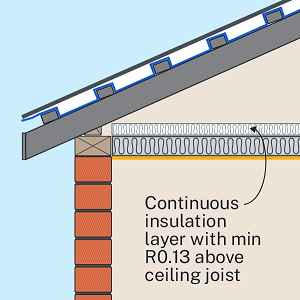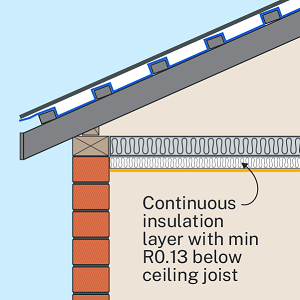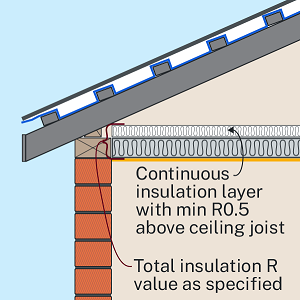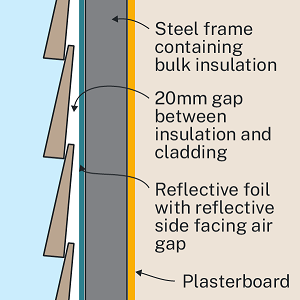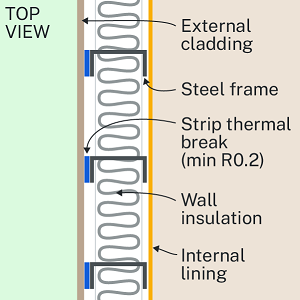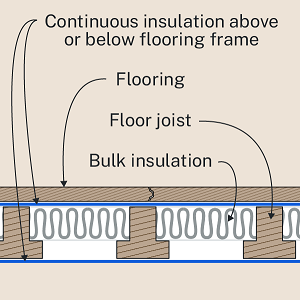What is thermal bridging?
Thermal bridging is an unintended path of heat flow, using a path of least resistance through a building envelope between the outside and inside. Thermal bridges may occur where there is an interruption in the insulation or where materials with high thermal conductivity (such as steel) are used. For example, if a steel truss roof directly supports an insulated corrugated iron roof, heat flows through the truss more readily than the surrounding insulation, hence making the insulation less effective. The truss in this example acts as a thermal bridge.
As the insulation becomes less effective, thermal bridging can increase your heating and cooling loads if it is not addressed properly.
Reflective insulation has a thin layer of reflective foil on one or both sides, and is designed to reflect heat.
Measures to address thermal bridging
If the construction assembly uses a steel frame, there are multiple options to address thermal bridging. You can demonstrate compliance to address thermal bridging in roofs and ceilings, external walls, and suspended floors by adopting one of the options listed below.
Roofs and ceilings
- increase the R-Value of the insulation between the ceiling frames by R0.5 more than the minimum insulation R-Value derived for non-metal frames, OR
- add a continuous ceiling insulation layer with a minimum R-Value of R0.13 above or below the ceiling joists or the bottom chords of the trusses, OR
- achieve the required minimum ceiling insulation R-Value as indicated in BASIX commitments by stacking two layers of insulation immediately on top of each other, such that the top layer is orientated to cover the ceiling joists or bottom chords of the trusses and has an R-Value of at least R0.5
Exteral walls
- install reflective insulation outside the frame to create a minimum 20 mm reflective airspace between frame and cladding, OR
- increase minimum insulation R-Value between frames by R0.5 as indicated in BASIX commitments, OR
- add a layer of continuous insulation with an R-Value of at least R0.30 on the inside or the outside of the frame, OR
- A metal-framed wall that forms part of the building envelope must have a thermal break, consisting of a material with an R-Value of not less than R0.2, installed at all points of contact between the external cladding and the metal frame.
Suspended floor
- increase insulation between floor framing to at least the minimum R-Value as indicated in BASIX commitments, OR
- add a layer of continuous insulation product above or below the floor framing with at least the minimum R-Value as indicated in BASIX commitments.
